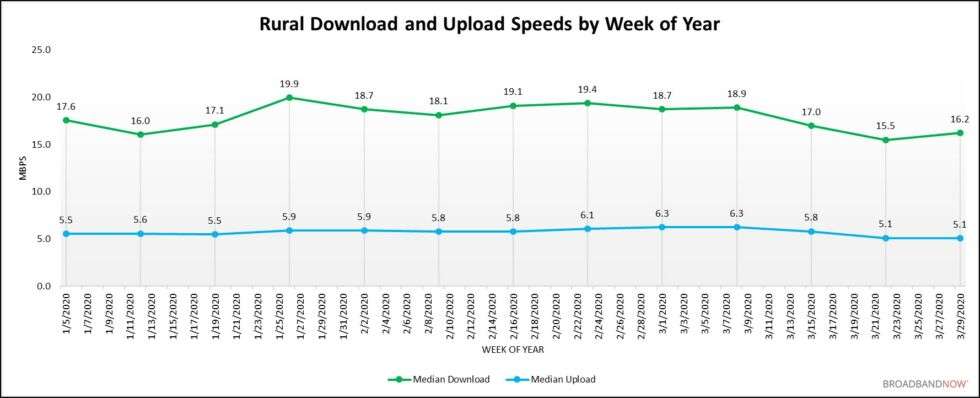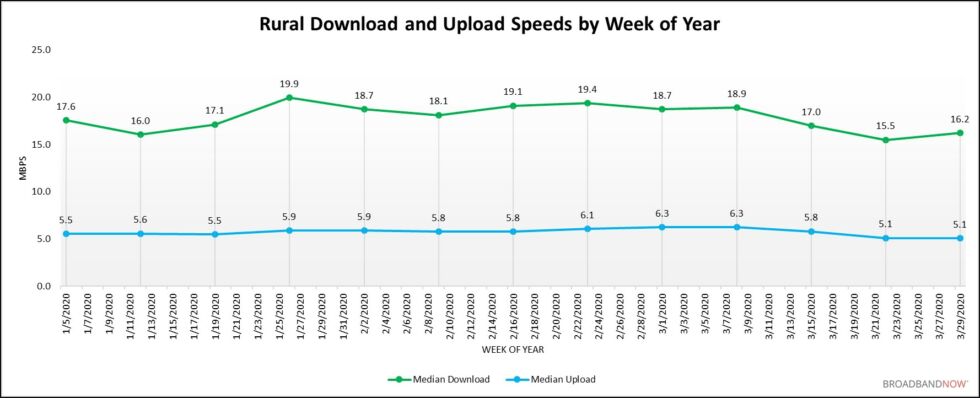
Pandemic hasn’t crushed broadband networks—even rural areas are doing OK
Pandemic-related broadband surge is hitting a plateau, data suggests. …
 reader comments
reader comments
32 with 23 posters participating
The sharp growth in residential-broadband traffic seen during the pandemic is starting to level off, new data shows. While Internet speeds have slowed somewhat in many parts of the United States, it turns out that even rural-broadband networks are holding up pretty well.
Speeds have dropped in rural areas but are stabilizing, BroadbandNow reported today. Median download speeds in rural areas ranged from 16Mbps to 19.9Mbps in each of the first 11 weeks of 2020. Speeds then fell to 15.5Mbps in March 22 to 28, the lowest recorded all year. But rural speeds went back up to 16.2Mbps in the week of March 29 to April 4.
Median upload speeds in rural areas ranged from 5.5Mbps to 6.3Mbps in the first 11 weeks of 2020 but have been just 5.1Mbps the last two weeks, the same report found:

To determine rural performance, BroadbandNow said it “aggregated speed-test results [from M-Lab] across all US ZIP codes in counties marked as non-metropolitan (Micropolitan and Noncore) under the CDC’s Urban–Rural Classification Scheme.”
This isn’t a definitive measure of how rural-broadband networks are handling increased residential usage by people losing jobs or working at home. For one thing, there is “limited availability of speed-test data in rural communities,” BroadbandNow said.
The group also hasn’t been able to provide separate results by technology. DSL-only or satellite-only measurements would offer more insight into broadband performance
Continue reading – Article source




